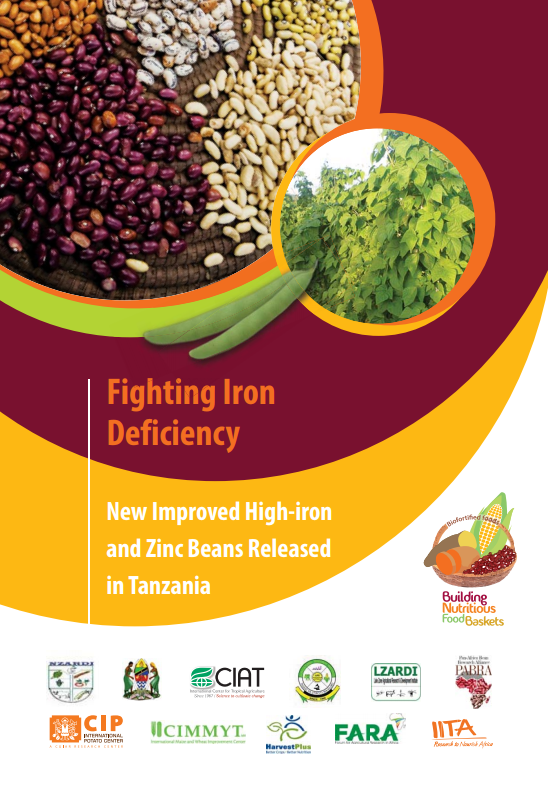High-iron beans are a special type of conventionally bred biofortified beans that contain high levels of iron and zinc. Biofortification enhances the nutritional value of staple food crops by increasing the density of vitamins and minerals in a crop through either conventional plant breeding, agronomic practices or biotechnology. Examples of these vitamins and minerals that can be increased through biofortification include iron, zinc and provitamin A Carotenoids. The research and release efforts were led by Selian Agricultural Research Institute (SARI) in partnership with ARI Uyole, ARI Maruku and the International Center for Tropical Agriculture (CIAT). The efforts were supported through the partners at the Pan Africa Bean Research Alliance (PABRA), The Building Nutritious Food Baskets (BNFB) project, Tropical Legume III projects, Swiss Development Corporation (SDC), The United States Agency for International Development (USAID) and The Global Canada Affairs. Together with farmers, these new varieties were tested in various agro-ecologies ranging from 1000 to 2000m above sea level in the regions of Arusha, Manyara, Kagera, Iringa and Mbeya. Studies were also conducted to ensure that these new crops have sufficient amounts of the nutrients needed to improve nutrition among the beneficiaries prior to the the national government official release.
The drive to release the high-iron beans was informed by the high prevalence of anemia globally and Tanzania, especially among the children under five, adolescent girls, and expectant mothers. The Tanzania Demographic and Health Survey and Malaria Survey Indicator Survey (TDHS-MIS) 2015-16 shows that anemia prevalence in children aged 6-59 months is at 58% with 26% mildly anemic; 30% moderately anemic; and 2% severely anemic. In some districts the statistics are worrying for example Shinyanga at 71% of children. Almost half (45%) of Tanzanian women of reproductive age (15-49 years) are anemic; with 33% being mildly anemic; 11% moderately anemic and 1% severely anemic. Anemia prevalence is highest in Zanzibar (60%), especially in the Kaskazini Pemba region (72%).
The research and release efforts were led by Selian Agricultural Research Institute (SARI) in partnership with ARI Uyole, ARI Maruku and the International Center for Tropical Agriculture (CIAT). The efforts were supported through the partners at the Pan Africa Bean Research Alliance (PABRA), The Building Nutritious Food Baskets (BNFB) project, Tropical Legume III projects, Swiss Development Corporation (SDC), The United States Agency for International Development (USAID) and The Global Canada Affairs.
Traits in MAC44 (Selian 14)
| · Name: SELIAN 14
· Growth habit: Climber · Medium seeded · Iron: 75.17-85.35ppm · Zinc: 26.38-41.65ppm · Yield potential: >2000 kg/ha · Maturity: 90-110 days · Best suited for mid to high-altitude area · Cooking time: 19-40 minutes · Resistance/tolerant: Anthracnose and Bean Virus |
Traits in RWV1129 (Selian 15)
| · Name: SELIAN 15
· Growth habit: Climber · Large seeded · Iron: 74.22-81.35ppm · Zinc: 27.38-42.55ppm · Yield potential: >2000 kg/ha · Maturity: 90-110 days · Best suited for mid to high-altitude area · Cooking time: 19-40 minutes · Resistance/tolerant: Anthracnose and Bacterial blight |
Read more from the brochure here

